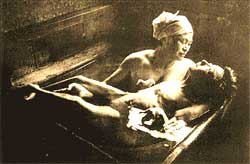Infamy and after
 japan had woken up to the Minamata disease way back in 1956, signalling the beginning of one of the worst pollution cases to have hit it in the post-World War ii era. In 1995, a 40-year-old saga of bureaucratic evasion, corporate high-handedness and judicial foot-dragging finally reached its culmination. The then Premier Tomichii Murayama's public apology (for the lethargic governmental response in dealing with the victims) and the announcement of a so-called final settlement capped an arduous and agonising search for justice by victims of the disease.
japan had woken up to the Minamata disease way back in 1956, signalling the beginning of one of the worst pollution cases to have hit it in the post-World War ii era. In 1995, a 40-year-old saga of bureaucratic evasion, corporate high-handedness and judicial foot-dragging finally reached its culmination. The then Premier Tomichii Murayama's public apology (for the lethargic governmental response in dealing with the victims) and the announcement of a so-called final settlement capped an arduous and agonising search for justice by victims of the disease.
The disease was officially recognised as afflicting people who had consumed mercury-contaminated fish and other marine products taken from the Minamata Bay in Kumamoto prefecture. The finger of blame pointed to the local chemical giant, Chisso Corporation, which for 12 years had callously dumped mercury into the waters of the bay. And this was not a mere flash in the pan. Minamata disease resurfaced in 1965 in Niigata along the lower reaches of the Agano river, where another chemical manufacturer, Showa Denko, had discharged mercury compounds.
Today, worn out by the long struggle with the two corporations and the Japanese government, most groups of victims have accepted the 1995 proposals. With the average age of the victims approaching 70, they do not have a choice.
Initially, of the 25,000 plaintiffs who had filed suits, only about 2,260 (of the more than than 17,000 Chisso cases) and 690 (of the 2,000 Niigata cases) were officially recognised and awarded compensation. In a highly belated move in January 1995, the Japanese cabinet announced the appointment of judgement examination committees to determine the eligibility for compensation of victims according to diagnostic records prepared by hospitals. Consequently, approximately 10,000 victims are due to receive compensation now. Many have already received it, while the rest are under investigation (medical) by the local governments.
Grudging acceptance
Though the 1995 package was construed as a victory for the victims, many activists in Japan were displeased with the meagre us $25,000 compensation. Today, each claimant is presumably receiving a total compensation of
